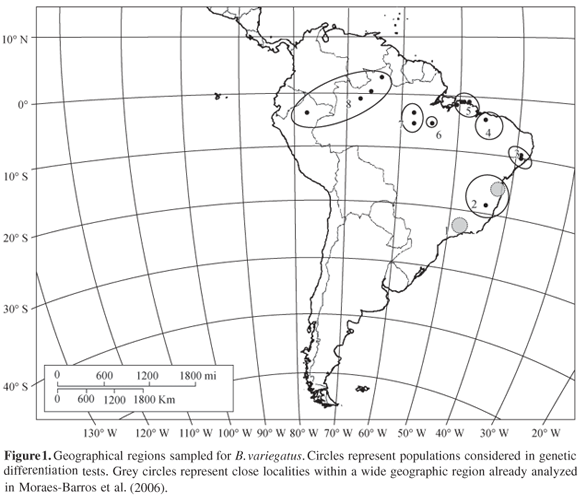In this study we propose the analysis of genetic diversity of the common three-toed sloth, Bradypus variegatus, in an attempt to understand population structure, identify divergent intraspecific units, and contribute to the knowledge of biodiversity in the neotropical forests. We analyzed a 387 bp segment of the mitochondrial DNA control region in 28 individuals distributed in different localities of both Atlantic and Amazon forests. Our results demonstrated that the genetic diversity of B. variegatus is distributed in six management units, MUs. The observed MUs encompass six phylogenetic lineages and represent respectively north and south regions of Atlantic forest, three regions within the Amazon forest, and a transition region between these two biomes. Considering the fact that these MUs are concordant with phylogroups and endemism areas already described for other vertebrate species, we can say that the study of B. variegatus, a widely distributed and not endangered species, can help to identify areas for conservation biology purposes in neotropical rain forests.
Bradypus; mitochondrial DNA; management units; conservation biology





